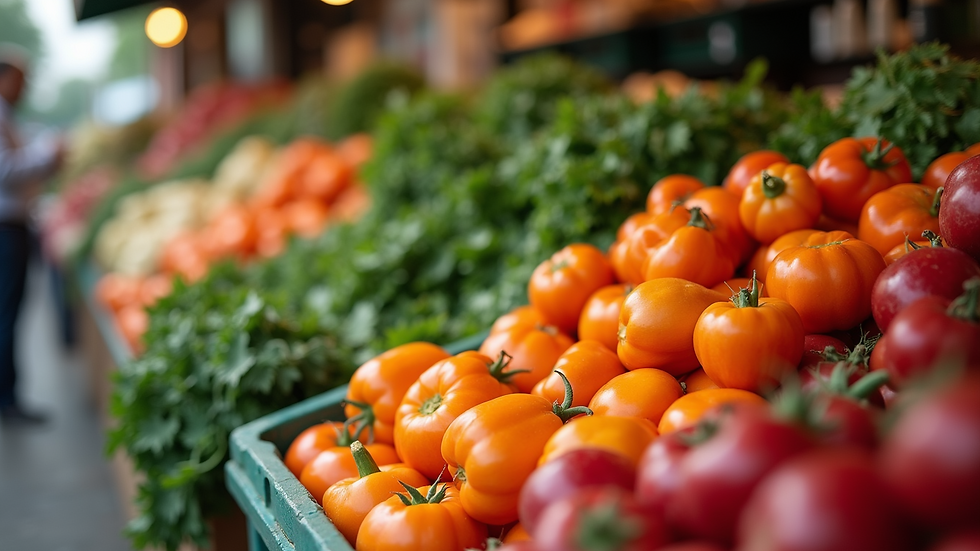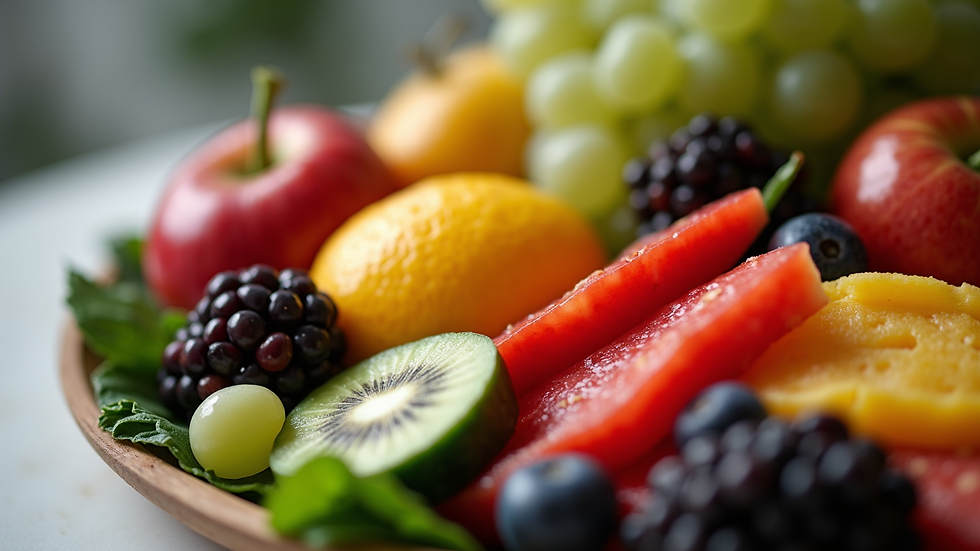Understanding Low Glycemic Index (Low GI) Foods for Better Health
- banaminhealthcare
- Oct 3, 2024
- 4 min read
Eating healthy involves making informed choices about the foods we consume. One critical concept to understand is the Glycemic Index (GI). The GI measures how quickly a carbohydrate-containing food raises blood glucose levels. Foods are ranked according to this scale, and understanding low glycemic index foods can lead to better health outcomes.

What Are Low GI Foods?
Low GI foods are those that rank below 55 on the Glycemic Index. These foods release glucose more slowly and steadily, which helps maintain more stable blood sugar levels. These include whole grains, legumes, fruits, vegetables, and nuts. By switching to low GI foods, you can reduce the risk of developing conditions like diabetes and heart disease while also aiding weight loss.
Examples of low GI foods include:
Barley
Quinoa
Lentils
Chickpeas
Apples
Oranges
Sweet potatoes
These foods not only help control blood sugar but also keep you full longer, which is beneficial for weight management and overall health.

Benefits of Low GI Foods
Incorporating low GI foods into your diet can have numerous health benefits. Some of the most important include:
Blood Sugar Management: Low GI foods help in regulating blood sugar levels, making them an essential choice for those with diabetes. Studies show that consuming these foods can significantly improve glycemic control.
Heart Health: By reducing insulin spikes, low GI foods can help decrease the risk of heart disease. The steady release of glucose helps maintain healthy blood lipid profiles.
Weight Control: Low GI foods have a high fiber content that can promote a feeling of fullness, leading to lower caloric intake. Eating these foods can assist in losing or maintaining weight effectively.
Sustained Energy Levels: Foods that release glucose slowly provide a more extended energy supply. This slow-burning energy is ideal for athletes or anyone with an active lifestyle.
Incorporating such foods can lead to a healthier lifestyle, benefiting your overall well-being.

How to Incorporate Low GI Foods
Transitioning to a low GI diet involves more than just changing what you eat. Here are some practical tips for incorporating these foods into your daily meals:
Start Your Day with Low GI Breakfasts: Replace sugary cereals with whole oats or quinoa or Green banana flour based porridge topped with berries or nuts. This provides a great base for a low GI diet.
Choose Whole Grains: Opt for brown rice, whole wheat bread, or barley instead of white rice or white bread. These grains offer more fiber and nutrients, helping you feel full longer.
Add Legumes to Meals: Incorporate beans, lentils, and chickpeas into salads, soups, or as side dishes. They are protein-rich and low GI, making them a versatile food choice.
Snack Wisely: Instead of reaching for chips or sweet treats, try healthy snacks like nuts or a low gi snack like falafel, Dosa, Idli, Paratha. These options keep you satisfied without causing a spike in blood sugar.
Remember, planning your meals and snacks ahead can make it easier to stick to a low GI diet.
Common Misconceptions about Low GI Foods
Like any dietary approach, there are misconceptions surrounding low GI foods that can lead to confusion:
All Carbohydrates are Bad: This is not true. Carbohydrates are vital for energy. It's about choosing the right types.
Low GI Foods are Always Healthy: While low GI foods are better for blood sugar control, they can still be high in calories or fat. Moderation is key.
You Can Only Eat Low GI Foods: It’s not necessary to eliminate high GI foods completely. It’s about balance and making smarter choices most of the time.
Understanding these misconceptions can lead to a more balanced and healthy approach to eating.
Making Low GI a Lifestyle
To reap the full benefits of low GI foods, consider these lifestyle changes:
Meal Planning: Use a meal prep strategy to plan your weekly meals, emphasizing low GI options to help you make better choices.
Hydration: Drinking enough water can also help manage blood sugar. Sometimes, our bodies confuse thirst with hunger, leading to unnecessary snacking.
Mindful Eating: Concentrate on your food while eating. This practice helps prevent overeating and can lead to appreciating your low GI meals even more.
Stay Active: Physical activity can enhance the effectiveness of a low GI diet. Regular exercise helps your body utilize glucose more efficiently.
Building a culture around healthy eating can make low GI foods a fundamental part of your family's diet.
Summary of Low Glycemic Index Foods for Better Health
Understanding and incorporating low glycemic index foods into your diet can have a profound impact on your overall health. Not only do these foods help manage blood sugar levels, but they also promote heart health, support weight loss, and provide sustained energy throughout the day. By shifting to whole grains, legumes, fresh fruits, and vegetables, you can enjoy a nutritious diet that supports long-term wellness. Embrace the benefits of low GI foods and turn healthy eating into a lifestyle! Try Banamin's low GI Food options to increase the variety of recipes in your low GI diet.



Comments